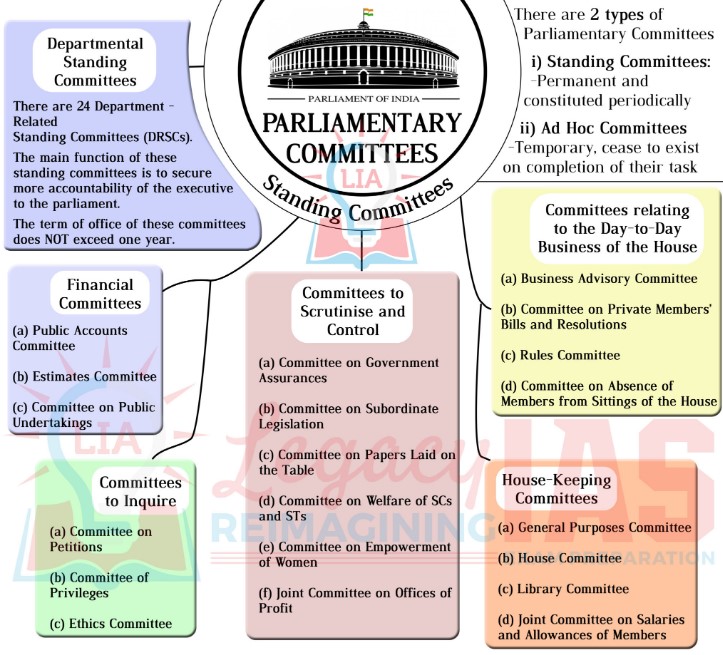Focus: GS-II Governance
Why in news?
Parliament is preparing new guidelines for its standing committees that may include a minimum 15 days’ notice and confirmation by one-third of the members before holding a panel meeting; nomination of members based on their qualifications, interests and occupations; and at least 50% attendance while collecting evidence and adopting reports.
Details
- The Rajya Sabha secretariat has already prepared draft guidelines after chairman reviewed the functioning of the eight standing committees under its purview.
- The Lok Sabha secretariat, however, is yet to draft their version.
- Once that exercise is over, common guidelines will be inked by Rajya Sabha chairman and Lok Sabha Speaker.
The Need
- To be sure, a whole set of dos and don’ts is already available in the rule books of the two Houses.
- But officials involved in the discussions pointed to an urgent need to bring functional guidelines to address vital issues related to the composition, performance, and work of the panels, given how the issues under their consideration are getting increasingly complex and specialised.
Highlights
- The draft guidelines add that “quorum of 1/3 of the total membership of the Committees shall be ensured in all the meetings of the Committees” and “efforts shall be made to ensure attendance of 50% of the total strength of the Committees while taking evidence and adoption of reports by the Committees”.
- While every MP is entitled to be a member of a Standing Committee, the draft guidelines say that “level of comfort of members with the issues to be discussed by the Committees and the domain knowledge of subject matter of the Committees is an enabling factor regarding attendance”.
- “All efforts shall be made to nominate members of parliament on various DRSCs based on their academic qualifications, interests and occupations being pursued,” the draft guidelines add, and “all political parties may be advised to consider the above” while recommending names of their MPs on various committees.
Standing committees of the Indian Parliament
- In the Indian Parliament, a Standing committee is a committee consisting of Members of Parliament or MPs.
- It is a permanent and regular committee which is constituted from time to time according to the provisions of an Act of Parliament or Rules of Procedure and Conduct of Business.
- The work done by the Indian Parliament is not only voluminous but also of a complex nature, hence a great deal of its work is carried out in these Parliamentary committees.
- Both Houses of Parliament, Rajya Sabha and Lok Sabha, have similar committee structures with a few exceptions.
- Their appointment, terms of office, functions and procedures of conducting business are broadly similar.
- These standing committees are elected or appointed every year, or periodically by the Chairman of the Rajya Sabha or the Speaker of the Lok Sabha, or as a result of consultation between them.
2 Types of Parliamentary Committees
There are two types of Parliamentary committee, the Standing committee and the Ad hoc committee.
- The Standing committees are constituted every year or frequently and they work on continuous basis.
- Ad hoc committees are temporary and created for specific task. Once that task is completed, the ad hoc committees cease to exist.

-Source: Hindustan Times



